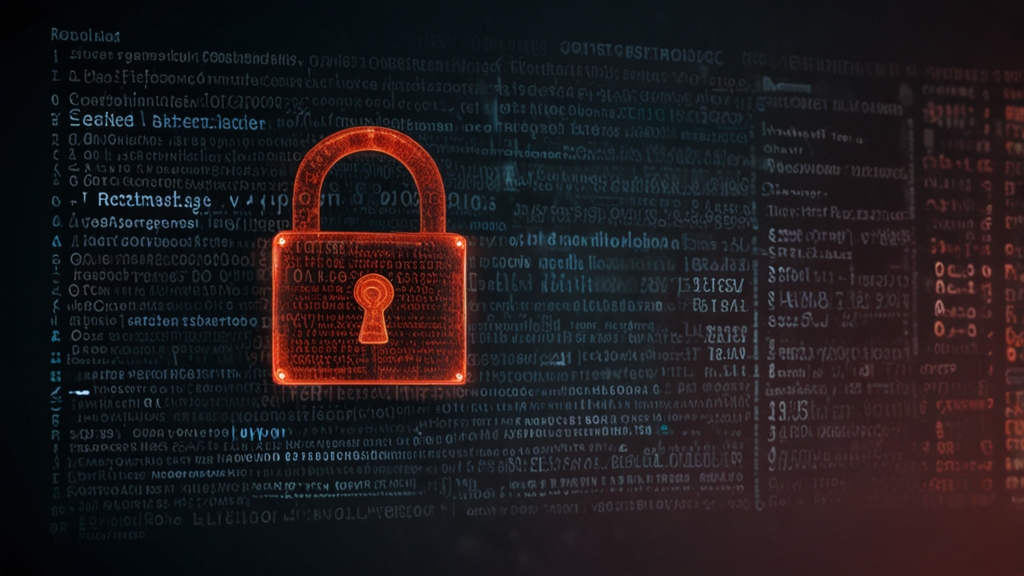Ransomware Attacks: What They Don't Want You to Know
In recent years, ransomware attacks have escalated both in frequency and sophistication, representing a significant threat to individuals, businesses, and even governments. These insidious cybercriminal activities can cripple systems and demand hefty ransoms to restore access. While the general public is aware of the broad strokes of ransomware, there are crucial facets that remain less discussed. This article sheds light on what they don't want you to know about ransomware attacks.
The Hidden Cost of Ransomware
When a ransomware attack is successful, the ransom itself is only the tip of the iceberg. The hidden costs include operational downtime, loss of data, legal ramifications, and damage to reputation. According to cybersecurity experts, for every dollar paid in ransom, businesses can expect to spend another $8 to $10 in recovery and mitigation efforts. These hidden costs often go unreported, making the true financial impact significantly underestimated.
They Target Everyone, Not Just Large Corporations
Contrary to popular belief, ransomware attackers do not exclusively target large corporations with deep pockets. Small and medium-sized enterprises (SMEs) are equally, if not more, vulnerable. SMEs often lack the robust cybersecurity infrastructure that larger organizations possess, making them low-hanging fruit for cybercriminals. In fact, the FBI has reported an increase in ransomware attacks targeting healthcare facilities, educational institutions, and local governments, entities that may not have extensive cybersecurity defenses in place.
Double Extortion: A Growing Trend
The ransomware threat landscape is evolving, with cybercriminals adopting more ruthless tactics to increase their leverage. One such tactic is "double extortion." In this scenario, attackers not only encrypt the victim's data but also threaten to release sensitive information if the ransom is not paid. This puts organizations in a double bind, forcing them to potentially face both operational disruption and severe reputational damage.
"The ramifications extend far beyond just financial loss. Double extortion can lead to long-term damage that no insurance policy can fully cover." — Cybersecurity Specialist
The Role of Cryptocurrency
Cryptocurrency plays a pivotal role in facilitating ransomware attacks. The anonymity and ease of transactions that cryptocurrencies like Bitcoin offer make them the preferred payment method for cybercriminals. This creates a challenge for law enforcement agencies, as tracing and recovering ransomware payments becomes exceedingly difficult. While there have been legislative efforts to regulate cryptocurrency transactions, such measures are still in their infancy and have not yet effectively deterred cybercriminal activities.
Inside Jobs: The Unspoken Risk
A less highlighted aspect of ransomware attacks is the role of insiders. Whether through coercion or collaboration, employees within an organization can significantly aid ransomware attackers. The 2022 Data Breach Investigations Report by Verizon found that nearly 30% of cyber incidents involve insiders. Companies must recognize this risk and implement stringent insider threat detection mechanisms.
Negotiation is Not a Guaranteed Solution
While some organizations opt to negotiate and pay the ransom in hopes of a quick resolution, this strategy is fraught with peril. There are no guarantees that the decryption keys provided by the attackers will work successfully. Moreover, paying the ransom can make the organization a repeat target. Our research indicates that companies that pay ransoms increase their likelihood of being attacked again by 50%, as they are seen as easy marks.
Preventative Measures: Knowledge is Power
Prevention is always better than cure when it comes to ransomware. Organizations need to invest in comprehensive cybersecurity measures including regular software updates, employee training, and robust data backup solutions. Customer education should not be overlooked; informed customers can be valuable allies in identifying and thwarting potential threats.
"Education and vigilance are our primary defenses against the ever-evolving ransomware threat landscape." — IT Security Manager
Concluding Thoughts
Ransomware attacks are not going away anytime soon. As long as there are vulnerabilities to exploit and financial gains to be made, cybercriminals will continue to refine their tactics. Understanding the unseen aspects of ransomware, from hidden costs to evolving methodologies, is crucial for effective defense. Awareness and education, paired with robust cybersecurity measures, are our best lines of defense against this pervasive threat.
In the fight against ransomware, knowledge truly is power. And the more we know about what they don't want us to know, the better equipped we are to protect ourselves and our organizations from becoming the next victim.














